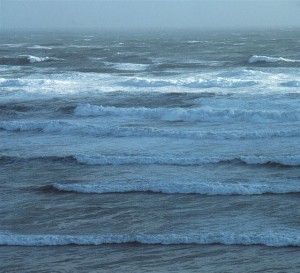There is no end to the study of the open ocean! Use the lessons below to create currents, observe upwelling, and learn about the links between the ocean and weather. Learn about plate tectonics and undersea volcanoes, earthquakes and tsunamis. Model an ocean bottom and create topographic maps. Examine life in the sea from tiny plankton to whales, and from the sunlit surface to the dark depths. Learn about hydrothermal vents and life based on chemosynthesis. Study ocean food webs, natural selection, and the many forms and uses of bioluminescence. Dissect squid, and put together a whale skeleton. Examine the impacts and complexities of pollution and over fishing, and learn how we can better care for this vast area that makes up most of our planet.
MARE lessons (Teacher’s Guide to Open Ocean, GEMS/ MARE Only One Ocean, GEMS/MARE Ocean Currents)
Apples and Oceans Ocean Routes
Planet Ocean: Global Exploration Message in a Bottle
Waste Disposal Squids: Inside & Out
Current Trends Great Plankton Race
Layering Liquids Whale with Class
Ice Cubes Demonstration Build an Open Ocean
Lessons
Ocean Zonation & Deep Sea Creatures
Growing Up in the Ocean, complex life cycles*
*first publication occurred in Science Activities, Classroom Projects and Curriculum Ideas, 46(4)
Field Inquiry: Jellies
 This material is based upon work supported by the National Science Foundation under Grant Nos. 0338153 and 0638731. Any opinions, findings, and conclusions or recommendations expressed in this material are those of the author(s) and do not necessarily reflect the views of the National Science Foundation.
This material is based upon work supported by the National Science Foundation under Grant Nos. 0338153 and 0638731. Any opinions, findings, and conclusions or recommendations expressed in this material are those of the author(s) and do not necessarily reflect the views of the National Science Foundation.

